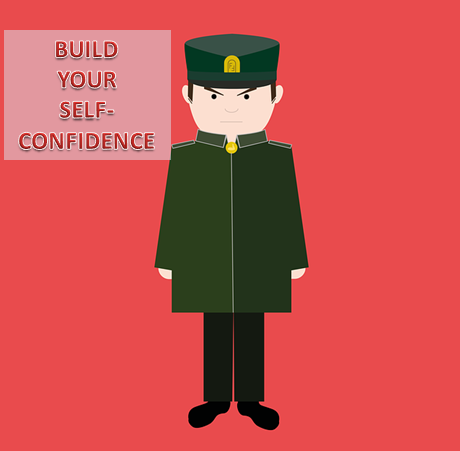When most people hear the term “self-discipline” it conjures up images of gruelling effort, long struggles and having to do things they don’t really want to do. However, self-discipline does not have to be this way!
In this article, we are going to be taking a detailed look at how to improve your level of self-discipline and how to develop self-discipline in your life, approaching the subject from a psychological perspective.
Learning how to cultivate the trait of self-discipline is one of the most important success skills that you could ever learn, as by taking the time to master it, you will become a much more productive person who is able to accomplish more with their life and waste less time in the process.
But don’t worry if you currently lack self-discipline at the moment, as nobody is born a naturally disciplined person. Just like any other skill it is something that you can learn with practice, and the more you practice, the better you will become at it.
As an added bonus, you will also notice that becoming a more disciplined person will help to strengthen your character and raise your levels of self-confidence and self-esteem.
What is Self Discipline?
If you were to ask ten people what self-discipline means, you would probably get ten different answers. Some refer to it as a “power within” that enables them to solve problems.
Some refer to it as self-control, self-improvement, self-restraint or will power. Others have called it the ability to stick with an objective, even when you lack the motivation to do it. Whilst others simply refer to it as the ability to overcome laziness and get on with the job.

But the best definition of self-discipline that I have heard is the following phrase from Brian Tracy:
“The ability to do what you know you should do, whether you feel like it or not.“
Self discipline means that when you have something to do, you do it, regardless of whether you like it or not. Often this will mean having to overcome your natural urge to do what is fun, easy and quick, and being able to do the things which are hard and necessary instead.
Since most of the things in life that will bring you long-lasting success require many hours of hard work, just think how much your life would change if you were able to ignore all the meaningless distractions around you and stay focused on the achievement of your goals.

Put quite simply, people who make it in life, whether that be becoming really rich, having a successful business or being admired and respected by others, have all developed the skill of self-discipline.
They focus their physical and mental efforts on the things which add value to their life, whereas unsuccessful people tend to focus their efforts on things which do not add value to their life such as spending long hours watching TV, reading celebrity magazines and playing video games.
What do successful people like?
Have a look at the following list of famous people and see if you can notice what they each have in common.
Donald Trump
Jay Leno
Margaret Thatcher
Thomas Edison
Napoleon Bonaparte
Any ideas?
They are all four-hour sleepers!
Whilst you may not have a global corporation or a country to run, and so can probably get away with a few extra hours in bed, the point is, successful people dislike the same things that you dislike but discipline themselves to do it anyway.

Why do they do things they dislike? Because they know that is the price they must pay for success, and so discipline themselves to do the things they know they should do whether they feel like it or not. The same applies to you.
If you want something in life there is a price you must pay to get it. This price might be a few minutes of your time, or it might be years of your time. You must therefore ask yourself, “Am I truly willing to pay the price to get what I want?” If you are, then eventually you will get it.
Successful people also have personal goals. They know what they want to achieve in their life, and work very hard, sometimes for many decades, to get what they want.
Goals give their life meaning, direction and purpose, which then makes it much easier for them to make the sacrifices that are required to achieve those goals.
Why most people aren’t very disciplined
The large majority of people in our western society are lazy, greedy and think only of short-term gain. Have a look at the following statistics as an example of this.
In a single month, 2,800 people searched for the term “self-discipline” on the internet. Guess how many people searched for the word ‘fun’?
200,000!!!
As you can see, most people are not interested in self-discipline. They prefer to engage in actions which satisfy their short-term needs at the expense of long-term failure in life.

This however, is quite a common personality characteristic, as all humans desire to do what is fun and easy over what is hard and necessary. We prefer to have something now and easily, rather than having to wait for it and work hard for it.
Short-term gratification
The desire to have something now rather than at a later date is known as immediate or short-term gratification.
This type of mentality causes people not to see the bigger picture, and as a result, they tend to focus on the pleasure or pain they will immediately experience rather than the pleasure or pain will they experience in the long-term.
Smokers for example, of which I used to be one of, smoke for the immediate pleasure they receive when they light up a cigarette. This however, comes at the long-term expense of poor health and possible disease.
Smoking is a good example of short-term gratification, because you will find that like smoking, most of the things which bring you short-term pleasure ultimately do so at the expense of long-term pain and suffering.

So how does this relate to self-discipline? Well, you will find that virtually all high achievers, whether they be in sales, management, athletics or any other high paying profession, all have a tendency to think in a long-term perspective.
They set themselves goals and mentally project themselves into the future where they see their goal as complete. They then use the emotion of their mental visualization to give them the strength and motivation that is needed to achieve it in real life.
This form of mental time travel allows them to overcome their natural desire for short-term gratification, and instead, focus their efforts on the things that will achieve long-term or delayed gratification.
As you are probably already very well aware, the things that take a long time to achieve are almost always longer lasting and of more value than the things which are quick and easy to obtain.
This is what really separates successful and unsuccessful people. As a result, your ability to discipline yourself enough to avoid the temptation of short-term quick fixes, will largely determine the type and level of success that you are likely to achieve in your life.
A good example to demonstrate this point, and one that everyone should be able to relate to, is the time we all spend at school. At school, you have two choices; work hard and get good grades or don’t work hard and have lots of fun instead.

Of course, having fun would be everyone’s favorite choice, as this satisfies our natural need for immediate gratification.
Unfortunately however, if having fun is the only thing you do at school then ultimately this will come at the expense of poor grades, which, in the real world, is likely to lead to a lifetime of unsatisfying, unfulfilling and low paid work as an adult.
It is important to note though, that one must obtain a balance between short and long-term gratification. As without some fun in a person’s life, that life is likely to be very dull and boring which could then affect a person’s level of motivation.
So whilst you do want to focus most of your time on activities that will bring you long-term value, occasionally, it can be beneficial to give yourself a short-term treat.
Thinking long-term
If you want to develop self-discipline in your life, then you need to start thinking in a longer term perspective than you currently are.
What you do today, will affect your life in one way or another in the future. You are quite literally paving the road that you will travel upon tomorrow with the actions which you take today.

So the next time you find yourself wanting to satisfy an immediate need, stop, and think about the long-term consequences of what you are doing.
To practice this technique do what the high achievers do. Project yourself into the future. Visualize the benefits or rewards that you will receive from doing something, and then use that motivational energy to propel you forward towards its accomplishment.
The Pleasure & Pain of Self Discipline
When you break it down to the simplest level, people are actually quite easy to understand. People like to experience pleasure and so do things which are pleasurable for them, and people do not like to experience pain and so avoid things which cause them pain.
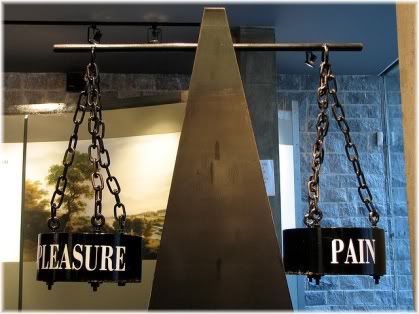
Understanding the emotions of pleasure and pain are therefore essential when it comes to developing self-discipline in your life, as these two emotions will play a big role in determining the types of thoughts you have and the resulting actions which you take on a day-to-day basis.
Not everyone however, responds to pleasure and pain in the same way, as some people responds better to the prospect of pleasure whilst others respond better to the avoidance of pain.
To determine whether you are a pleasure or pain focused person, have a look at the questions below before moving on to the rest of this article.
Question 1
If you were in the middle of doing some work, would you spontaneously take time off to spend with a friend? Or would you finish what you were doing and arrange to meet your friend at a later date or time?
Pleasure focused people are easily distracted from less enjoyable activities in favor of more immediate enjoyment.
Pain focused people tend to do something because they fear the consequences of not doing it.
Question 2
Do you eat your favorite foods at dinner first? Or do you eat a little bit of everything without regard as to what you like best?
Pleasure focused people are the “eat dessert first” type of people who want immediate gratification.
Pain focused people tend to delay experiencing the things they dislike for as long as possible.
Question 3
Do you work on a project only when you feel guilty for waiting so long to start it? Or do you like to get things started as early as possible?
Pain focused people wait to do something until the pain becomes too great to bare. They only do work when the pain of procrastination is worse than the work itself.
Pleasure focused people may also delay starting a project, but are motivated to get it over and done with so that they can experience more pleasure later on.
Analysis
Being a pleasure focused person is no better or worse than being a pain focused person, and vice versa.
In fact, whilst most people will be able to classify themselves as being either pain or pleasure focused, it is not uncommon for a person to be motivated by both emotions. Although they will, usually have one dominant emotion which they are driven by and most responsive to.
Successfully applying self-discipline in your life comes not from always avoiding pleasure or constantly feeling pain, but rather from learning to use your dominant emotion so that you are able to complete the goals which you set for yourself when you should do them.
Pain focused people for example, can help to increase their level of self-discipline by thinking about the negative things that might happen if they do not do a particular task, whilst pleasure focused people can increase their self-discipline by thinking about the positive things that might happen after they complete their task.
What is Your Pain Threshold?
The main reasons why people lack self-discipline is because they want to avoid doing something that is creating psychological discomfort within them, or are not motivated enough to do something due to a lack of discomfort.
This discomfort can be something which you perceive as being boring, uncomfortable, hard work, physically demanding or anything which you do not like doing.

Because self-discipline is necessary in order to get yourself to do the things you would rather not do, but know you should, it is important to expose yourself to uncomfortable activities in order to increase your pain threshold.
This is simply the level at which you decide something is too painful to do, and so the higher you can raise your pain threshold the higher your level of self-discipline will be as a result.
Remember, we are using “pain” in the context of mental pain, which refers to something which makes you feel uncomfortable or something which you would avoid doing.
People with a low pain threshold tend to predominantly focus their energy on pleasurable activities. They do things which are fun, easy and require minimal effort. As a result, when they have to do something which is not fun and easy, they find such tasks extremely difficult to do.
Such people are said to have a low-level of self-discipline, because they are unable to force themselves to do the things which they know they should do whether they feel like it or not.
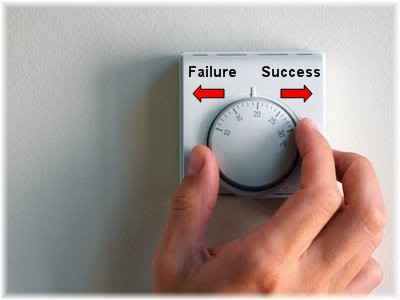
Everyone has enough self-discipline to do the fun and easy things, because such activities do not require very much discipline to do. The real test of your level of self-discipline, therefore comes when you have to do something which is not fun and easy as such activities require the most discipline to do.
A simple way to increase your pain threshold is to do the things which you dislike doing first, instead of postponing them until later. For example, at breakfast, lunch and dinner you could eat the foods you dislike first.
The more you can do simple activities such as this, the more you will be able to develop your level of self-discipline by raising your pain threshold. Conversely, the fewer of such activities which you do, the less developed your level of self-discipline will become.
Applying Pleasure & Pain to Self Discipline
Pleasure and pain are absolutely crucial when it comes to understanding and developing self-discipline, as these two emotions are the key drivers of your behavior.
Once you understand this, you can then use these emotions to your benefit to make you a more disciplined person, rather than having them work against you and making you a less disciplined person.
Below we discuss some additional ways that pleasure and pain can be applied to self-discipline.
1) Reward and punishment
Everything that you do in life is done to receive a reward or avoid a punishment. For example, children do what their parents ask of them because they know that they will be rewarded for doing so. This reward may be something physical such as candy, or intangible such as winning their parents approval or praise.
Children also do what their parents ask of them because they know that disobeying their parents wishes may result in a punishment, such as them being spanked or prevented from going out with their friends.

Your behavior is therefore strongly influenced by the pleasure or pain that you associate with a given task. The more reward or punishment that you associate with something, the more you will be motivated towards or away from it.
However, too much pleasure or pain can immobilize you and prevent you from taking further action. Too much pleasure will make you lazy and feel as though you can’t be bothered to do something, whilst too much pain can physically prevent you from doing something.
Self discipline therefore requires a balance between pleasure and pain, as too much or too little of either will destroy any attempts at living a more disciplined life.
2) Aversive conditioning
The people who tend to have problems with self-discipline, are those who struggle to move away from bad feelings they may have experienced in the past.
This is known as aversive conditioning, which describes a process where a bad past experience is associated with a certain activity. Due to this association, a person then becomes motivated to avoid doing that same, or a similar, activity again.
For example, if you touch a hot stove and burn your hand, it is very unlikely that you will ever touch a hot stove again. You have learned to associate the stove with pain, and so become motivated to avoid receiving that pain again.

What this means in terms of self-discipline, is that if you are the type of person who struggles to put bad experiences behind you, then anything which you may have tried and failed at in the past, such as your personal goals, you will most likely not want to try again.
3) The “Push-Pull” effect
The opposite to people who are motivated away from self-discipline by pain, are those who are motivated towards self-discipline by combining pain and pleasure.
Such people motivate themselves to start a task by thinking about how bad things would be if they didn’t do it. To motivate themselves to finish the task, they then think about how good things will be when it is over. This is known as the “push-pull” technique of self-discipline.
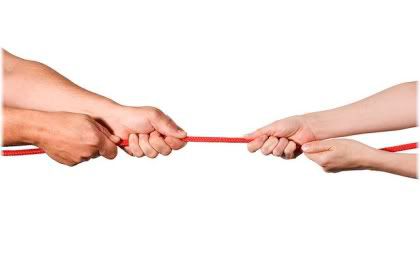
Once you understand the push-pull effect, it becomes very clear that motivation is not an issue when it comes to self-discipline.
Everyone is motivated by something, what determines the direction of your motivation is how you associate the emotions of pleasure and pain with a given task or activity. Pleasure motivates us towards something, whilst pain motivates us away.
Measuring Your Level of Self Discipline
A very beneficial exercise that can be done to maintain a more disciplined lifestyle, is to rate the level of discomfort that you feel towards a particular task.
This can be done by using a ten point scale, where 1 equals no discomfort and 10 equals the most discomfort. The idea here is to gauge your current mental attitude towards a task.
If you find that your level of discomfort is very low, such as 1 or 2, then you will probably feel too lazy to start your task.
This may also result in procrastination and avoidance behaviors where you do other tasks to distract yourself from what you should be doing. You may for example, have to put the trash out, but because you are lying down and watching TV, you can’t be bothered to do it at the moment.
When you find that your discomfort levels are very low, your aim should be to raise the level of discomfort that you are experiencing as this will motivate you to carry out your task. So if you wanted to take the trash out, you could start by standing up and walking around.

As you raise your level of discomfort you will find that your motivation to complete your task increases, because you will also be motivated by the prospect of returning to a lower level of discomfort.
Most of the time however, you will find that you can raise your level of discomfort regarding a particular task by thinking of the negative consequences that will happen if that task is not started.
For example, a person who earns a high wage has little incentive to get a second job because their current income allows them to live a comfortable lifestyle. A person who is on a low wage however, and is at risk of losing their home, will be strongly motivated to get a second job because they have a lot to lose.
A good way to determine if you are experiencing discomfort is to look for feelings of anxiety, worry, feeling tense, sweaty hands, shortness of breath or increased heart rate. These are the physical symptoms of psychological discomfort, and the more discomfort you are in, the more intense these symptoms will be.
Dealing With the Fear of Change
A lack of discomfort is a very common reason why people lack self-discipline, as without enough discomfort, you simply won’t be bothered to do something. Sometimes however, the reverse can happen whereby a person experiences so much discomfort that the fear they are feeling immobilizes them from taking any action.
When dealing with very high levels of discomfort, such as a rating of 9 or 10, you therefore need to lower the level of discomfort that you are feeling in order to allow yourself to carry out your task. Below are listed some of the ways that you can do this.
1) Relaxing with creative association
Discomfort and emotional pain can tense you up and cause feelings of anxiety when you think about events that have been negative for you in the past. By using the following creative association technique, you can help to reduce the level of discomfort that you are experiencing.
To do this technique, simply close your eyes and imagine that you are walking down a staircase with ten steps. As you take each step down the staircase, inhale and exhale down to the lower step. While you do this, feel yourself becoming more and more relaxed the further you move down the staircase.

When you get to the bottom, imagine yourself in a different setting. Somewhere which you regard to be pleasant. Perhaps under a tree? Or on a lush green grass next to a flowing river?
Whatever setting you choose, imagine yourself as being so relaxed that you fall asleep for a short time. When you are really relaxed, you may feel a floating sensation or feel that your muscles are becoming relaxed.
When you are ready leave this area, exit via another staircase. This staircase will have three steps. As you go up each step, breath in and out becoming more aware and awake with each step.
This simple relaxation technique should take no longer than 5-10 minutes, and is an excellent way of reducing your level of discomfort. Further practice will also help you to become less fearful, and therefore less adversely affected by, other situations which cause you psychological discomfort.
An added benefit of using this relaxation technique, which is essentially a form of meditation, is that you will improve the strength and health of your immune system, and by doing so, make yourself more resistant to disease and infection.
This is because negative feelings, such as those caused by stress and anxiety, can weaken your immune system. By being able to relax yourself during stressful or anxiety provoking moments, you can therefore help to overcome these negative effects on your body.
2) Get a massage
Discomfort is often experienced as feelings of tenseness, particularly at the top of the neck, the temples and where the spine meets the head. By massaging these areas yourself, or getting someone else to do it for you, you can quickly eliminate feelings of pain, discomfort and built up tension.
Massage is excellent for relieving stress, but also has the added benefit of improving blood circulation and helping to remove toxins from the body.

If you have a partner, massaging them will eventually lead them to associate pleasure with you. This will help to create a more intimate and loving relationship. But as with any reward, this should be done intermittently and randomly, as otherwise it will lose its effect.
3) The winning circle
In this relaxation technique, you must first concentrate on a time when you were completely successful or happy. Try to access that past event vividly and experience as much sight, sound and feeling as you can.
Now, draw an imaginary circle on the ground. When you are close to fully reliving that moment, step in the circle. Experience the event as vividly as you can. Now step out, and step back in and recall that past experience again.
What you are aiming for is to immediately and automatically access that feeling when you step in the circle. In other words, you are associating the circle with a particular emotional state. In the future, anytime you need a boost you can imagine yourself stepping into the circle and you will immediately feel at your best.

This type of association is something that many people do regularly without being consciously aware of doing it. For example, have you ever heard a song on the radio and then suddenly felt really alive or happy? Have you ever seen an animal or a person, and then suddenly felt happy? Or maybe the sight of a certain food makes you happy?
All of these things act as a triggers, which remind us of a certain experience we had in the past. By seeing that trigger again, we automatically feel the way it previously made us feel.
The winning circle technique uses the same principle, whereby you associate a feeling with a trigger. This trigger can be anything you like, so you don’t have to use a circle. For example, you could associate a certain feeling with an item of clothing, a pen or something else which you use regularly.
To recap the process:
- Imagine a past experience when you were happy and successful.
- Experience it again as vividly as you can. Feeling it is very important.
- Draw a circle on the ground.
- Step into the circle and experience that event again.
- Step out the circle, and step back in.
- Make sure that you experience the same feelings.
- If you don’t repeat the steps.
In closing, you should always be aware of your current level of discomfort when doing a task, as this will directly affect your level of self-discipline.
Using these techniques will help to reduce that discomfort, and the feelings of pain or anxiety that are associated with it. As a result, your level of self-discipline will be vastly improved.
Context & Content Reframing
Many people tend to see self-discipline as a constant struggle in which they try to achieve and accomplish their goals and objectives.
Actually, the opposite is true, as the people with the greatest amounts of self-discipline possess the greatest enjoyment in life. They don’t necessarily try harder, but rather they tend to try to succeed in ways that eliminate their painful feelings.
One of the best ways of dealing with the pain that may come from changing to a more disciplined lifestyle, is to see the pain in a different perspective.

This technique is called “cognitive reframing” or just “reframing”, and it works much like a frame around a picture. A poor frame can make any painting look bad, just like a beautiful frame can make a mediocre picture look better.
The central principle behind reframing is that there is no good or bad in life. There is only your perception of it. So the term “reframe” refers to your ability to take a frame of reference or perspective, and reframe it into something that can support you.

We all see life in a way that either limits or empowers us, and so you can use this concept to develop a more self disciplined life. The key to reframing is to see the things and experiences in your life as supporting your goals and objectives.
If you can do this, you will not only have a much more optimistic outlook on life, but will also gain more control over it.
See everything as empowering you
Seeing everything as empowering you is an extremely common reframing technique used by highly successful people. Their frame of reference is that virtually everything empowers them and is bringing them closer to their goals, even their failures.

Unsuccessful people tend to be distracted by negatives and setbacks, and this frame therefore tends to be destructive to their lives.
For example, many people who fail in business or at something they are trying to do, often become discouraged and usually give up without trying again. In contrast, successful people who fail see their experience as a lesson from which they can learn and use to try again for next time.
So whilst two different people may experience the same event, how they “frame” that event is what really determines the eventual outcome they will have.
Context reframing
Two types of reframing that will help to change your attitude about the negative aspects of self-discipline are content and context reframing.
Context reframing refers to your ability to take a negative situation and make it positive in another context. For example, “I wanted to go to the park today, but I can’t as it’s such a rainy day. Oh well, at least the car is now clean, I needed to wash it anyway.”
Once you try using context reframing you will be surprised at how many things you once saw as a negative, actually turn out to be positive and beneficial in some way. A good example to demonstrate this point is the story of the 3m company.

They had developed an adhesive that didn’t stick very well, and so wondered how they were going to sell an adhesive that didn’t do it’s job!? One researcher decided to reframe the situation, and put a little bit of adhesive on the back of a piece of paper. The result? “Post It Notes”!
Content reframing
Content reframing is the second type of reframing. It involves changing what a situation means to you. For example, Christians look at death not as the end of life, but as the beginning of life in heaven.
Or to use a previous example, people who fail at business and then go on to be successful will see their first failure not as a failure, but as a valuable lesson from which they learned something important from.
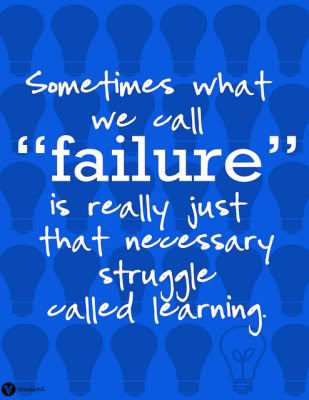
Content reframing can be used to change how you perceive virtually any situation. For example, if you have been putting off cleaning your room or garage, it is probably because you have a negative mental image of it. Maybe you picture a messy room? Boring and tedious work? Something that’s going to take you forever to do?
But what do you think would happen if you changed that image and reframed it? How about making the image brighter? Seeing your friends and family helping you whilst you tell jokes to each other? Do you think that your attitude to the situation would change? You bet it would!
You don’t hate your house looking clean, you just hate the perceived pain that it takes you to get it that way. By reframing the task into something more enjoyable, you will vastly increase your willingness to do it.
It’s not as bad as you think!
Think of the last time that you avoided doing something and then feeling that it wasn’t that bad once you had actually started it. Maybe you even enjoyed it?
This is one of the reasons why reframing can be so beneficial in overcoming the initial resistance to starting a task, as often the image we have of something is actually worse than the reality of doing it.
By using reframing you will overcome that initial resistance, and in turn will likely get more done, in a shorter period of time and without procrastinating beforehand.
Reviewed – 1st April 2016
